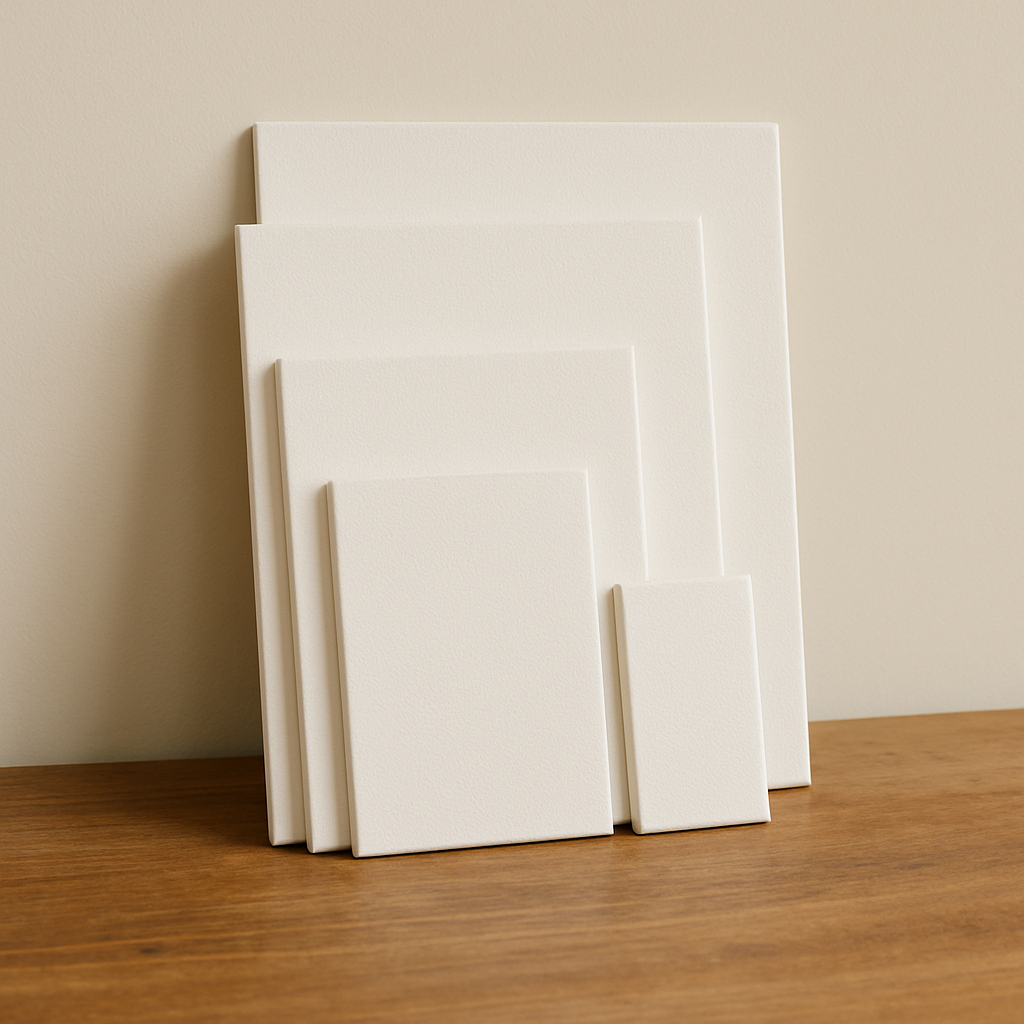Choosing the Right Surface for Plaster Sculptural Art
When creating plaster sculptural wall art, the foundation you start with makes all the difference. The right surface provides strength, stability, and longevity for your piece—while the wrong one can lead to cracking or warping over time. In this textured wall art tutorial, we’ll cover how to choose a base that supports your design from the first layer of plaster to the final brushstroke.
If your surface is too flimsy, the plaster compound can easily crack or crumble. Unless that’s an intentional part of your style, you’ll want something sturdy enough to hold up through sculpting, drying, and sealing. You’ll also want to think ahead: Will your finished artwork be framed? If so, what kind of frame works best for your chosen base?
In this guide, I’ll walk you through my top three surfaces for plaster art—and my personal go-to foundation for building dimensional, long-lasting wall sculptures.
Canvas Panels
(or) uncradled wood panels
These are canvas wrapped chipboard panels. Ranging from small to large, I haven’t seen them much bigger than 11x14.
Pros
Lightweight and sturdy
Inexpensive
Cons
The water we use will warp them
Require frame, or presentation finishing
These are my typical go-to for smaller pieces. Though it’s very important to have a method to keep straight as they dry, so your piece isn’t warped at the end.
Typically I buy custom floating frames for my panels.
Link to the panels I use (Amazon)
Canvas
These are be MUCH bigger than the panels, as they have an underlying framework that can hold the piece. However there are some items to consider.
Pros
Don’t need frames
Can come with a frame
Lightweight
Inexpensive can be)
Cons
Flimsy - can crack during the most fragile part
I generally stay away from these, unless I’m creating my “Ripple” artwork, which uses a low amount of plaster. I have created a 30x40 piece with no problem however, which illustrates that with proper prep-work these do make suitable surfaces.
I have framed and unframed canvases. Honestly it’s very subjective.
Cradled Wood Panels
These versatile little gems, are my go-to. Made of different qualities of wood, I’ve honestly haven’t had any issues with wood panels warping, cracking, or being framed then hung.
Pros
Sturdy
No frames needed
Cons
Expensive (especially bigger ones)
Plaster can come off, if there’s not grit to adhere too
Though I probably should, I never have needed to sand the pieces prior to applying the plaster. While the canvases are naturally rough, these wooden panels are typically smooth. Sometimes plaster comes off, but it’s very easy to fix.
Link to the panels I use (Amazon)
We’re just hitting the tip of the arty tutorials coming your way. Each surface has a slightly different path of its art journey, and I’ll share. Be sure to get your specific question answered by reaching out below.
Stay art curious, my friends!



